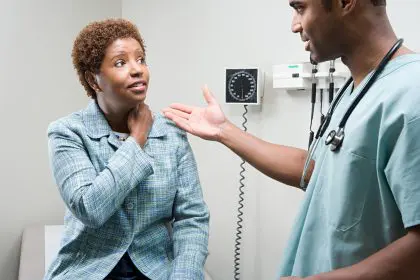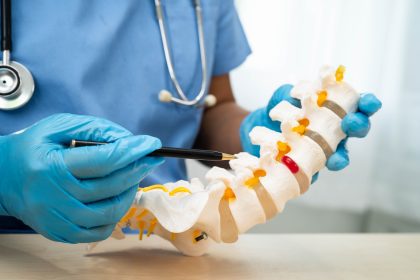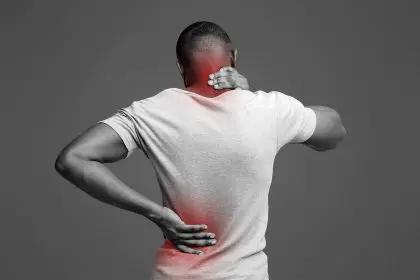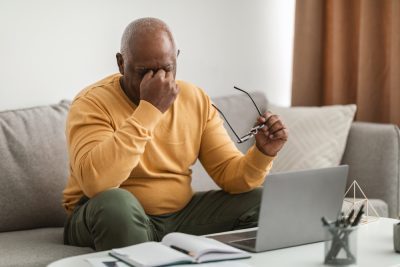Back pain affects millions of people worldwide, but not all discomfort stems from muscular issues or spinal problems. Sometimes, that ache in your back serves as your body’s warning system for underlying organ dysfunction that requires immediate attention.
How back pain connects to internal organs
Your spine and internal organs share intimate connections through nerve pathways and anatomical proximity. When organs like the kidneys, liver, or lungs experience distress, they often refer pain to specific regions of the back through shared nerve networks.
This phenomenon, called referred pain, occurs because your brain sometimes struggles to pinpoint the exact source of internal discomfort. Instead, it projects the pain to more familiar surface areas that share nerve connections with the affected organ.
Understanding these pain patterns can help distinguish between common musculoskeletal back problems and potentially serious organ-related conditions that require different treatment approaches.
The distinctive features of organ-related back pain
Several characteristics help differentiate organ-referred back pain from typical spine or muscle issues:
Unusual pain patterns: Organ-related discomfort often doesn’t follow typical musculoskeletal pain distribution. The pain may not change with movement or position changes, unlike mechanical back problems that worsen with specific movements.
Accompanying symptoms: Additional symptoms frequently accompany organ-related back pain, including fever, unexplained weight loss, nausea, changes in bowel or bladder habits, or difficulty breathing.
Pain timing and triggers: Organ-related pain may correlate with specific activities like eating particular foods (liver/gallbladder issues) or appear at consistent times of day unrelated to physical activity.
Pain quality: The sensation often differs from mechanical back pain, presenting as deep, dull, constant pressure rather than sharp, movement-dependent discomfort.
Treatment response: Organ-related back pain typically doesn’t improve with standard back pain remedies like rest, heat, or over-the-counter pain medications.
6 types of back pain linked to organ dysfunction
- Mid-right back pain: Liver connection
Pain in the middle-right section of your back, particularly between your lower ribs and spine, may indicate liver problems. This area corresponds to the location of your liver, which sits primarily in the right upper abdomen but extends toward the back.
Unlike mechanical back issues, liver-related pain often presents alongside yellowing skin or eyes (jaundice), dark urine and light-colored stool, unexplained fatigue, abdominal swelling, nausea or vomiting, and pain that worsens after consuming fatty foods.
Liver problems requiring medical attention include hepatitis, fatty liver disease, cirrhosis, and in rare cases, liver cancer. The pain from these conditions typically feels dull and constant rather than sharp or changing with movement.
- Middle to lower back pain: Kidney concerns
Kidney-related discomfort typically manifests as pain on either side of your spine between the bottom of your ribcage and your hips, often slightly deeper than muscle pain. This region directly corresponds to your kidney locations.
Distinctive features of kidney-related back pain include pain that doesn’t change with movement or rest, discomfort radiating to the lower abdomen or groin, accompanying urinary changes (frequency, urgency, pain, unusual color), fever and chills, nausea or vomiting, and swelling in legs, ankles, or around eyes.
Common kidney issues causing back pain include kidney stones, infections (pyelonephritis), and polycystic kidney disease. Kidney stone pain specifically often comes in waves of intense, sharp pain rather than constant discomfort.
- Upper back pain: Lung involvement
Pain in the upper back, particularly between shoulder blades or behind the ribcage, may signal lung problems. Your lungs occupy a large portion of your chest cavity, with their posterior surfaces adjacent to your upper spine.
Lung-related back pain typically presents with these additional symptoms: shortness of breath, especially during minimal exertion, persistent cough, sometimes with blood, chest tightness or pain that worsens with deep breathing, unexplained fatigue, recurring respiratory infections, and wheezing or noisy breathing.
Conditions like pneumonia, pleurisy (inflammation of the lung lining), pulmonary embolism (blood clot), or in serious cases, lung cancer can manifest as upper back pain. These conditions usually create pain that worsens with breathing or coughing.
- Middle back pain: Pancreatic signals
The pancreas sits deep in the abdomen behind the stomach, but problems with this organ can refer pain to the middle back, often described as a band of discomfort around the upper abdomen that extends toward the back.
Pancreatic issues typically include these additional warning signs: pain worsening after eating, especially fatty foods, unintended weight loss, nausea and vomiting, oily, smelly stools that float (steatorrhea), yellowing of skin or eyes, and abdominal bloating.
Pancreatitis (inflammation of the pancreas) and pancreatic cancer represent the primary pancreatic conditions causing back pain. The discomfort often intensifies when lying down and may improve when sitting forward.
- Lower back pain: Reproductive and intestinal links
Pain in the lower back can stem from several organs, including the intestines and reproductive organs. This area houses part of the colon, as well as the uterus and ovaries in women, and the prostate in men.
When lower back pain relates to these organs, watch for changes in bowel habits (diarrhea, constipation, narrow stools), abdominal cramps or bloating, blood in stool, and in women: menstrual irregularities, pelvic pain, abnormal vaginal bleeding. In men: difficulty urinating, urinary frequency, especially at night.
Conditions like inflammatory bowel disease, endometriosis, uterine fibroids, ovarian cysts, and prostate disorders can all manifest as lower back pain. The discomfort typically doesn’t follow movement patterns characteristic of musculoskeletal issues.
- One-sided upper back pain: Gallbladder and spleen issues
Pain on one side of the upper back may indicate problems with the gallbladder (right side) or spleen (left side). Both organs can refer pain to the corresponding side of the back when inflamed or enlarged.
Look for these additional symptoms: right-sided pain after fatty meals (gallbladder), left-sided pain with abdominal fullness (spleen), nausea or vomiting, fever, tenderness when pressing on the upper abdomen, yellowing skin (with gallbladder issues), and easy bruising or bleeding (with spleen problems).
Gallstones, cholecystitis (gallbladder inflammation), and splenic enlargement or rupture can all cause one-sided back pain. Gallbladder pain often comes in waves after meals, while splenic pain tends to be constant.
Key differences from mechanical back pain
Most back pain (approximately 80%) originates from mechanical issues involving muscles, ligaments, discs, or facet joints. This typical back pain presents with these common characteristics:
Pain that changes with specific movements or positions, discomfort that improves with rest, localized tenderness when pressing on specific back areas, pain that may radiate into buttocks or legs but usually not into the abdomen, stiffness, especially in the morning or after inactivity, and relief with standard back pain treatments like heat, gentle stretching, or anti-inflammatory medications.
By contrast, organ-related back pain typically doesn’t follow these patterns, making the differences valuable diagnostic clues.
When to seek immediate medical attention
Certain back pain symptoms warrant emergency evaluation, particularly when they suggest serious organ involvement:
Seek emergency care for back pain with: severe, unrelenting pain, fever above 101°F (38.3°C), unexplained weight loss, recent significant injury, loss of bowel or bladder control, progressive weakness or numbness in legs, pain accompanied by chest pressure or difficulty breathing, and back pain during pregnancy with additional symptoms like vision changes or abdominal cramping.
These combinations may indicate serious conditions requiring prompt intervention, including kidney infection, pneumonia with pleural involvement, or other acute organ dysfunction.
Diagnostic approaches for organ-related back pain
When organ involvement is suspected, healthcare providers typically employ these diagnostic strategies:
Laboratory testing: Blood and urine tests can reveal inflammation, infection, or dysfunction of specific organs through markers like liver enzymes, kidney function indicators, or signs of infection.
Imaging studies: Ultrasound, CT scans, or MRIs provide detailed views of internal organs, helping identify structural abnormalities, inflammation, or tumors that might cause referred back pain.
Function tests: Specialized tests like pulmonary function tests or liver function assessments help evaluate how well specific organs are performing.
Endoscopic procedures: In some cases, direct visualization through endoscopic procedures may be necessary to examine organs like the intestines for sources of referred pain.
Preventive measures for organ health
Protecting organ health through lifestyle choices remains the best strategy for preventing organ-related back pain:
Maintain hydration: Sufficient water intake supports kidney function and helps prevent kidney stones, a common cause of severe back pain.
Follow a balanced diet: Limit processed foods, excess salt, and unhealthy fats to support liver and pancreatic health while maintaining appropriate weight.
Exercise regularly: Moderate physical activity improves circulation to all organs while helping maintain healthy weight, reducing strain on your back and internal systems.
Avoid smoking: Tobacco use damages lung tissue and impairs circulation to all organs, increasing risk for multiple conditions that can cause back pain.
Limit alcohol consumption: Excessive alcohol intake stresses the liver and pancreas, potentially leading to inflammation and referred back pain.
Manage chronic conditions: Properly controlling conditions like diabetes, hypertension, and heart disease helps prevent complications affecting organs that may refer pain to your back.
Understanding the connections between your back pain and internal organs provides valuable insight that could lead to earlier detection of serious conditions. While most back pain stems from mechanical issues that resolve with conservative care, recognizing the warning signs of organ involvement ensures you receive appropriate evaluation and treatment when needed.













